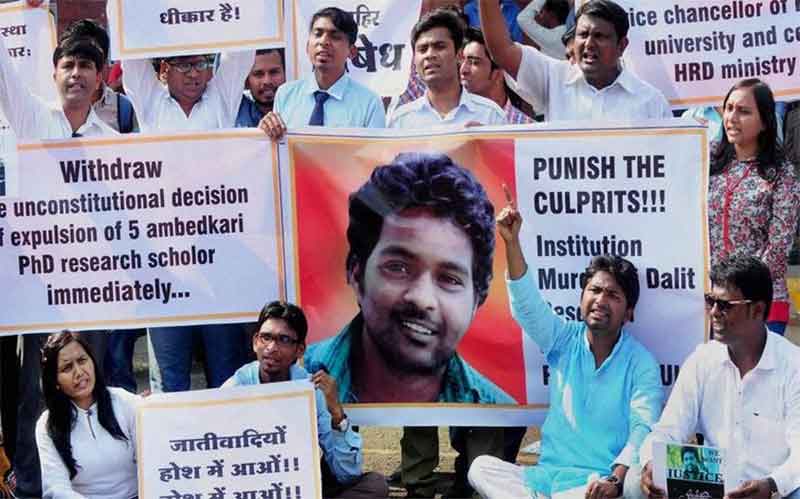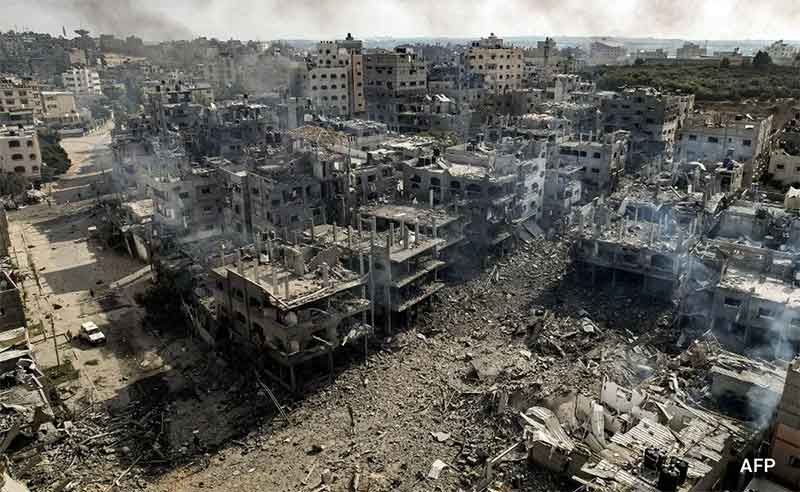
One of the most worrying manifestations of climate change relates to the higher possibility of more people being exposed to more destructive and torrential water flows. India with its record of frequent inland floods as well as a long coastline exposed to cyclones is particularly vulnerable in this respect.
The fear of higher frequency and intensity of cyclones in times of climate change is by and large confirmed in the context of the experiences of India in recent decades. At some places people said that we have seen cyclones in the past but never so intense and so high.
Another cause of worry is that cyclones often tend to bring heavy unseasonal rains over a large area much beyond the coastal region. If this is after some of these areas have already suffered from seasonal monsoon floods, then this can create a very difficult situation.
What brings hope is that despite increasing difficulties some states like Odisha have achieved increasing expertise and actual disaster-time success in timely evacuation of people and accommodating them in the many shelters that have been constructed. As a result the death toll even in some cyclones of high intensity could be avoided or minimized to very low levels. However the success has not been the same in all coastal areas and higher intensity or height of flood waves will continue to pose a serious challenge.
The National Cyclone Risk Mitigation Project, a World Bank assisted project which has several components, is a leading effort of India in this context, contributing 535 shelters and 88 km. of saline embankments in its first phase.
With its vast network of rivers India annually faces widespread floods in rivers which are heavily concentrated in the monsoon months. In times of climate change these can be aggravated due to several factors including the concentration of high intensity rainfall in a few heavy rain episodes.
Dams and embankments have been often considered the more important aspects of flood-control but limitations and precautions relating to this should be highlighted too. There should be a high state of alert in issues relating to dam-management and careful handling of water-flows by dams. There should be clear instructions to dam management authorities that in the middle of various competing objectives the avoidance of catastrophic damage should always get top priority. There should be arrangements for water-flows to be coordinated in such ways that catastrophic damage can be avoided under all circumstances and downstream areas are well-informed of the extent of water releases and the cautions related to this.
As we are in the middle of times of climate change, the authorities and particularly the dam management authorities should be prepared to handle situations which are worse than the norms to which they have been used in the past. The mountain areas including the Himalayan region as well as other hilly areas have become very vulnerable to higher damage from floods and landslides due to a mix of climate change related factors as well as local floods resulting from flawed development policies and projects.
India is not alone in experiencing the paradox of more area becoming exposed to floods even as the expenditure on flood protection goes on increasing. Many countries have experienced this. Clearly we need a review of basic thinking related to flood protection.
There are some floods which are very highly destructive and/or prolonged. Clearly we need to give more attention to check such floods or reduce the harm from them. Some of the most destructive floods in recent years have been those caused by embankment breaches and sudden release of huge quantities of water from dams. Such floods can be checked to a very significant extent by adopting appropriate policies, in the short-run and in the longer term. Some of the most prolonged floods or water-logging cases are those caused by the obstruction of natural drainage. These can also be checked to a significant extent by adopting appropriate steps in the short-term and in the longer-term.
However while checking the more destructive and prolonged floods, we must also learn to co-exist with the natural process of rivers spilling over their banks when there are heavy rains. There are ways of making this co-existence much more bearable and even turning the flood-flows to several beneficial uses.
Firstly, forests and green cover in the catchment areas should be very well-protected. There is a lot of difference between natural dense mixed forests and man-made plantations. It is natural mixed forests with their good share of more dense, broad leaf species that we need, as well as plenty of other indigenous growths that can protect soil and conserve water effectively. We need well-planned soil and water conservation efforts in catchment areas, taken up with close participation of local communities.
In the immediate flood-plains nearer to river we must avoid costly infra-structure and those crops which can be destroyed easily by floods. This is the place for conserving water and for fruit orchards or other useful trees which are capable of absorbing as well as tolerating excessive water and moisture, for grass fodder as well as livelihoods based on this.
If we take these precautions then by the time floods reach the wider flood-plains their intensity would be much reduced. More flood-tolerant varieties of crops can also be found, based on indigenous biodiversity which has been neglected. The drainage paths should be kept so free of obstructions that flood waters find their path easily to natural depressions, lakes, ponds and tanks, filling them up to provide water later in the rain scarce months. Free drainage paths devoid of obstructions will allow water to clear quickly, at the same time leaving behind fertile silt which will help farmers to get good crops without chemical fertilizers.
We need to be much more selective and cautious regarding engineering structures of dams and embankments, taking prudent decisions on the basis of this understanding, instead of just rushing for dam and embankment construction without a comprehensive understanding of various impacts.
All this requires very good understanding of local conditions and a highly decentralized approach, with communities empowered and resourceful to take and implement decisions and also having the understanding to resolve differences and work for common good.
While a broad understanding at a wider level is very useful, the implementation must be as per local conditions and realities, and for this decentralization and empowerment as well as harmony of local communities are very important.
To bring such changes in flood policy, the perception about rivers and floods should change in very basic ways. A narrow engineering based perception and dominance based perception should change to a perception based on living with nature, understanding nature and its ways and trying to live in harmony with them , as well as the related vision of largely free-flowing rivers. Such a vision also involves giving adequate importance to all life-forms which thrive in and around rivers. Such a vision involves wider and longer-term thinking based on harmony with nature, while giving up narrow and reductionist approach based on dominance.
This is true for most countries in the context of reducing floods based on a better understanding of floods and rivers and having the due consideration for protecting rivers and river-life as well.
Another important aspect is to give more importance to more vulnerable people living in flood-prone areas including the poorest households and women. The weaker section households live in houses which can be completely destroyed by torrential water. In many flood-prone areas there is high migration of men so that there are many women-led households. These need special attention. When people seek shelter on higher grounds at flood-time, the sanitation needs of women deserve special attention.
India has a system in place for compensating flood and disaster affected people and while the compensation may not be adequate considering the high damage in many cases, it is in many cases an important source of support for people affected by disasters, including floods and cyclones. India also has a reasonably well-established system of providing immediate relief to disaster-affected people. However, there is certainly room for improving these relief and compensation systems. To give an example, when farmers get compensation, it is not just the landowner but also the sharecropper (where sharecropping is involved) who should also get a part of the compensation.
In the more difficult disaster situations of times of climate change, disaster rescue teams and army personnel have been increasingly involved in several difficult situations of rescue. Often they have made a very brave effort, resulting in the rescue of thousands of people (and sometimes stranded tourists) in very difficult conditions. Several administrators have also become known for their skills and experience in organization of evacuation, rescue and relief. Such special skills and experience will be needed more and more in times of climate change.
Bharat Dogra is a journalist and author, is Honorary Convener, Campaign to Protect Earth Now. His latest books include Planet I Peril, Man over Machine, A Day in 2071 and Protecting Earth for Children.














































